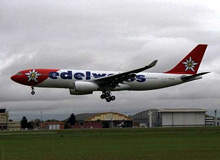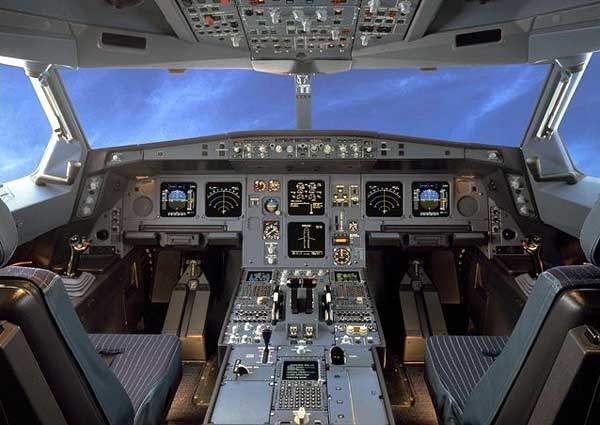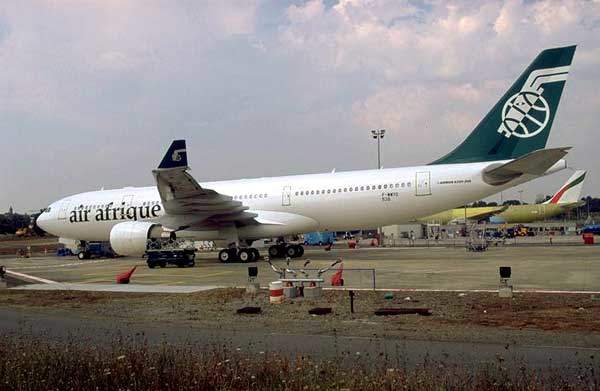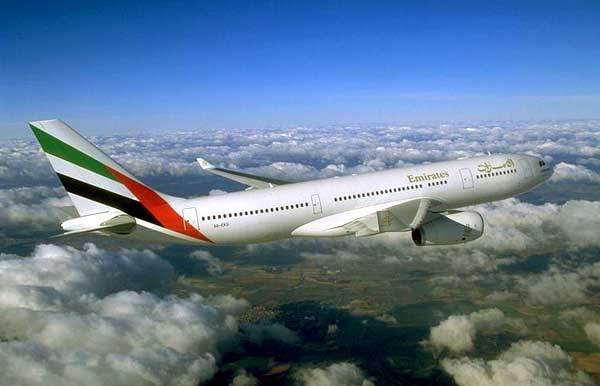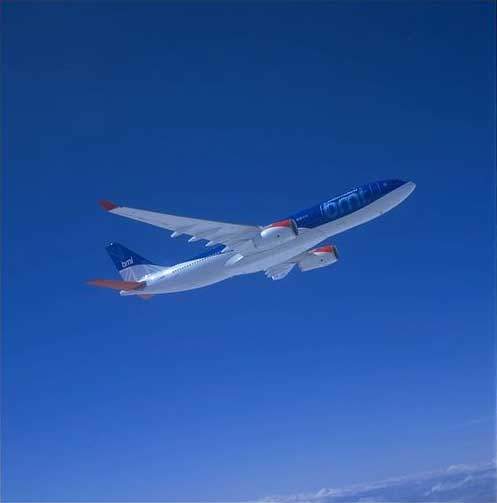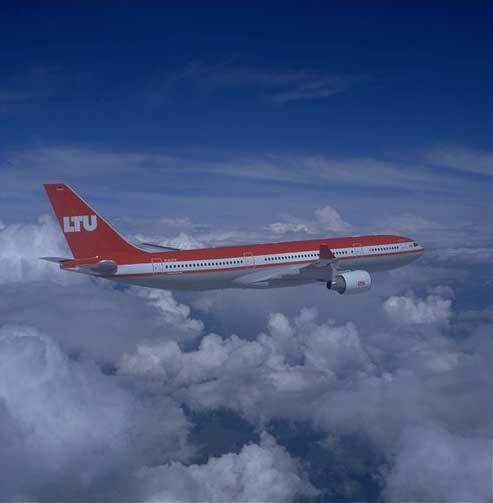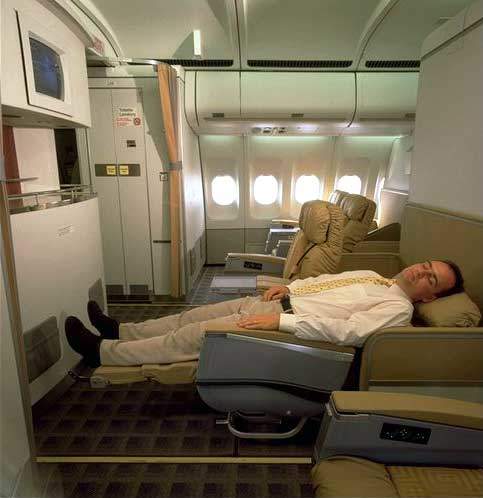The A330 is the original wide-bodied medium and long-range twin-engine airliner of the Airbus A330 / 340 family of aircraft. The A330 twin-engine and A340 four-engine airliner were developed at the same time.
The A330 and A340 were the first airliners to be designed entirely by computer aided design (CAD). The aircraft first flew in 1992 and entered service in 1993.
The A330-300 first entered service in 1994 and was designed for flights up to 13,500km, typically carrying 335 passengers. In 1998 the A330-200 entered service with a range of 12,300km and seats 253 passengers in three classes.
As of August 2011, approximately 1,155 A330s were ordered with 807 delivered. The 1,000th A330 aircraft was sold in 2008.
A330-200 disappearance
The A330-200 model had not had any fatal accidents involving passengers prior to 1 June 2009, when an Air France flight from Brazil to France disappeared over the Atlantic Ocean after a possible lightning strike. It is thought the plane reported a short circuit four hours after leaving Rio de Janerio with full capacity of passengers.
The Airbus A330’s crash over the Atlantic en route to Paris reminded operators of existing procedures to be applied in the event of loss of, or unreliable, speed indication. The European Aviation Safety Agency (EASA) made the announcement that the A330s were ‘airworthy and safe to operate’.
According to the EASA, there could have been ‘a possible malfunctioning of the air speed indication system’ (pitot probes). The agency said it was analysing data ‘with a view to issue mandatory corrective action’.
Airbus A330 international orders and deliveries
Orders as of October 2011 stand at 568 for the A330-200 with 437 delivered and 549 for the A330-300, with 372 delivered. A total of 433 A330-200 and 370 A330-300 aircraft are currently operational worldwide.
A330 versions are currently in service with a large number of operators, including: Air Afrique, Air Algérie, Air Canada, Air Caledonie International, Air Caraibes, Air China, Air Lanka, Aer Lingus, Air France, Air Transat, Asiana Airlines, Austrian Airlines, British Midland, Canada 3000, Cathay Pacific Airways, China Airlines, China Eastern Airlines, CIT Aerospace, Cyprus Airways, Dragonair, Egyptair, Emirates, Etihad Airways, EVA Air, Garuda Indonesia, GECAS, Gulf Air, Intl Lease Finance Corp, Korean Air, Lufthansa, Malaysia Airlines, Northwest Airlines, Philippine Airlines, Qantas, Qatar Airways, Scandinavian Airlines (SAS), SriLankan Airlines, Swissair, TAM, Thai Airways and US Airways.
Past orders include ten for Jet Airways and five for Kingfisher Airlines placed in June 2005, 20 for Air China ordered in July 2005, ten for China Southern Airlines ordered in September 2005, two for Aer Lingus ordered in March 2006, three for Afriqyah Airways, 12 for Grupo Marsans ordered in July 2006, five for Lufthansa ordered in October 2006, six for TAM ordered in November 2006 and 20 for AerCap ordered in December 2006.
Gulf Air ordered 20 A330-300s in May 2008. Saudi Arabian Airlines ordered eight A330-300s in 2008 and the first aircraft was delivered in May 2010. The first of seven A330-200s ordered by Oman was delivered in September 2009.
Turkish Airlines ordered two A330-200F aircraft in November 2009. Nepal Airlines procured one A330-200 and A320 aircraft in the same month.
Virgin Atlantic purchased six A330-300s from Airbus in January 2010. The first of three A330-200s ordered by Sichuan Airlines was delivered in February 2010.
In March 2010, Airbus received an order to supply 17 A330 aircraft to Malaysia Airlines. Airbus delivered two A330-200 to Royal Jordanian in May 2010. Thai Airways ordered seven A330-300s in July 2010. Hawaiian Airlines ordered six A330-200 in November 2010, with deliveries expected between 2012 and 2015.
TUI Travel ordered two A330-300s in January 2011. Three A330-200 aircraft were ordered by AirAsia X in February 2011 with deliveries scheduled to commence in 2014. Korean Air ordered five A330-200s in May 2011, and 12 A330-300s were ordered by GE Capital in the same month.
Singapore Airlines ordered 15 A330-300s in June 2011 with first delivery scheduled in 2013. Airbus awarded a six-year tailored support package (TSP) contract to SIA Engineering Company in November 2011 to maintain Singapore Airlines’ fleet of 15 A330-300 aircraft.
Eight A330-200s were ordered by IAG in July 2011 and four by Garuda Indonesia in the same month.
Airbus signed a contract with Air Pacific in October 2011 to supply three A330-200 aircraft, with deliveries commencing from 2013.
In January 2007, Airbus launched the A330-200F medium to long-range freighter. The freighter has a payload of 64t and range of 7,400km or a payload of 69t and range of 3,200nm (5,930km). Orders for 61 freighters were received, including Flyington Freighters of India (six), the launch customer, and Guggenheim Aviation (six).
Commitments to order have come from Intrepid Leasing (20), Avion Aircraft (six) and MNG Airlines (two plus one). The A330-200F completed its maiden flight in November 2009 and entered service with Ethiad Airways Cargo in July 2010. The maiden flight of the second A330-200F aircraft took place in January 2010.
Avianca ordered four A330-200F aircraft in September 2011. MASkargo received the first A330-200F freighter in the same month.
Eight A330-200F aircraft are operational worldwide.
Airbus Industrie is a consortium formed by EADS and BAE Systems. EADS, the European Aeronautic Defence and Space company, was formed by a merger of Aerospatiale-Matra of France, Daimler-Chrysler Aerospace of Germany and CASA of Spain (former members of Airbus). In October 2006, BAE Systems completed the sale of its shareholding to EADS, which is now the sole owner of Airbus.
In January 2004, the UK Government announced the selection of a multirole tanker transport based on the A330-200 as its future strategic tanker aircraft (FSTA). The aircraft was proposed by the air tanker team, led by EADS. The maiden flight of the first FSTA was successfully completed on 4 June 2009 and it is scheduled to enter service with the RAF in 2011. The RAF’s fleet will have about 14 FSTA A330-200 aircraft in the near future.
Australia ordered five A330-200 MRTT in December 2004 and the aircraft was also selected by the United Arab Emirates in February 2007, with a requirement for three aircraft.
A version of the A330-200 tanker, the KC-30, was chosen by the US Air Force in February 2008 for its tanker aircraft replacement programme to replace the KC-135. Northrop Grumman, teamed with EADS North America, proposed the aircraft, to be designated the KC-45.
The first A330-200 aircraft was delivered to Afriqiyah Airways in August 2009. It can accommodate 230 passengers in a two-class cabin. It is primarily used for long-haul operations on routes from Tripoli to Africa and Europe.
Airbus signed a memorandum of understanding (MoU) with Turkish Airlines during the Le Bourget Airshow in June 2009 to provide seven A330-300 aircraft. The aircraft is equipped with Rolls-Royce engines and can cater to 289 passengers in a two-class configuration. The first A330-300 aircraft was delivered in September 2010.
Turkish Airlines ordered additional A330-200 aircraft in June 2010 with deliveries commencing from 2011. The first of the 53 A330-200s ordered by Hong Kong Airlines was delivered in June 2010.
Flight deck of the wide-bodied medium airliner of the Airbus A330 / 340 family
The same two-crew flight deck is installed in the A330 and A340 and is very similar to the flight deck of the A320.
The high level of operational commonality in the Airbus fly-by-wire aircraft gives enormous logistical benefit and cost saving. A pilot can transfer from a 107-seat A318 to the A330 aircraft and to the 380-seat A340-600 or vice-versa with only a minor amount of additional training.
The pilot and co-pilot have sidestick controllers and rudder pedals. There are six main displays in the cockpit, with a duplicated set, one for each pilot, of primary flight displays and navigation displays.
The electronic flight instrumentation system (EFIS) includes the flight and navigation displays and the electronic centralised aircraft monitors (ECAM).
Avionics onboard on the A330 long-range twin-engine airliner
The aircraft’s fly-by-wire system is configured around three primary and two secondary flight control computers (FCPC and FCSC), which all operate continuously. The flight management and guidance and envelope computers control the aircraft at every phase of the aircraft’s flight.
The system has the same flight envelope limit protection as the A320, (stall and excess speed protection and protection against manoeuvres exceeding the aerodynamic and structural limits of the aircraft) but maintains the protection for a longer period of time than that of the A320.
Airbus has developed the future air navigation system, (FANS-A) which integrates a Smith’s digital control and display system and a Honeywell flight management system. The FANS-A system is fitted on new build A330 and A340 aircraft and can be retrofitted on existing A330/340 aircraft.
Engines of the original wide-bodied medium / long-range twin-engine airliner
The aircraft is powered by two turbofan engines mounted on underwing pylons. The airline can specify the 300kN General Electric CF6-80E1, the Pratt and Whitney PW 4168A or the Rolls-Royce Trent 772B engines.
Fuselage of Airbus’ widely used A330 / 340 family of aircraft
The wide fuselage of the A330 and 340 family is 5.64m in diameter, which allows a comfortably roomy cabin width of 5.28m.
The A330 and 340 family features a six abreast seating arrangement in first and business class, so each passenger has an aisle or window seat. Economy-class passengers are generally seated in an eight abreast layout with no passenger being more than one seat away from an aisle.
The front and rear cargo doors are of sufficient width and height to accept standard pallets (2.24m×3.17m) or LD3 containers. The underfloor cargo hold can accommodate up to 32 LD3 standard containers or 11 pallets. A bulk cargo hold of capacity 19.7m³ is situated just aft of the main rear cargo hold.
Some airlines have flown regional overnight freight-only services with the A330 aircraft after a full day’s passenger service, showing that the aircraft is able to operate profitable cargo flights even without a single passenger.
In March 2009, Airbus introduced its newly designed seating layout for A330’s first class. This layout allows a party of two to sit face to face and talk over a table. When alone the passenger can fill-in the space between the seats and turn it into a bed.
A330-500 product development study
CIT Aerospace, an operating unit of the CIT Group financial services corporation based in USA, has ordered 35 Airbus single-aisle aircraft and 15 Airbus A330s, including the planned A330-500 aircraft. As of September 2008, 199 orders had been received from CIT Group, including 157 A320 aircraft, 30 A330s, seven A350s and five A319s for both executive and private use.
The A330-500 product development study aircraft will have a capacity for 200 to 275 seats, higher payload and range as well as a high level of commonality with the smaller A320 family and the larger A330/A340 family.

